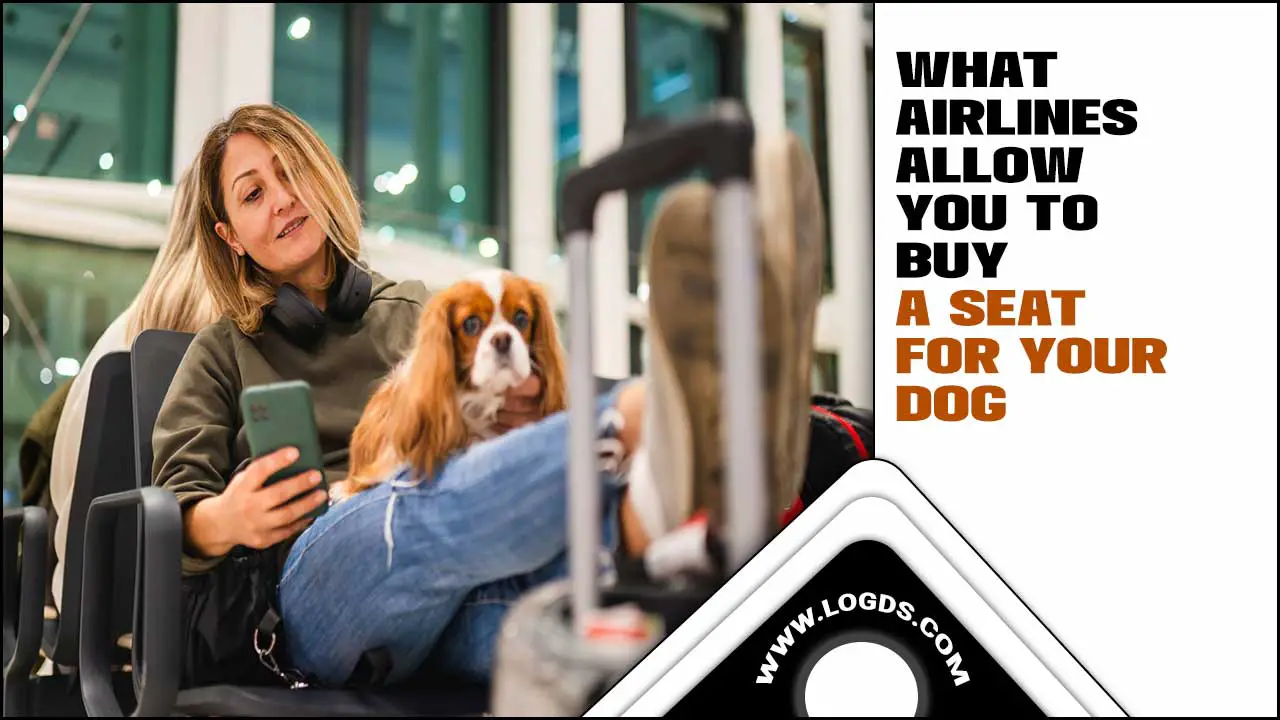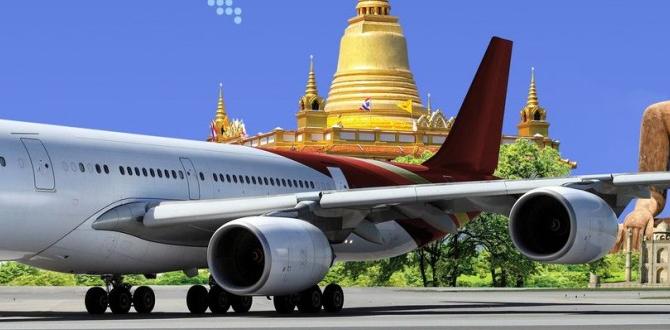Imagine you’re packing for a trip with your family. You have your perfect outfit and favorite book ready. But wait, what about the suitcase? Many travelers wonder about size requirements for carry on luggage.
Did you know that not all airlines have the same rules? Don’t let your trip start with a surprise at the airport! It’s essential to know the right dimensions. This helps to avoid extra charges or hassles. Some airlines allow bigger bags, while others have stricter rules. Ever seen someone struggle to fit a bag in the overhead bin? You can avoid that by understanding what’s allowed. Let’s dive into how different airlines handle carry on luggage sizes. This helps you to keep your travel stress-free!

Understanding Size Requirements For Carry-On Luggage
Packing for a trip? Size matters! Most airlines allow a carry-on bag no bigger than 22 x 14 x 9 inches. Imagine squeezing your favorite outfits into a tiny suitcase. How small can your necessities get? Save space with rolling techniques. Tuck socks into shoes. Don’t get caught at the airport with an oversized bag. Double-check your airline’s specific size limits before you fly. Keep packing smart and stress-free!
Airline-Specific Regulations
Major U.S. airlines’ carryon size and weight limits. European airline guidelines for carryon luggage.
It’s a bit like playing Tetris when figuring out if your suitcase will be a perfect fit in the overhead bin. Different airlines have different rules for carry-ons. Let’s explore some major U.S. and European airlines’ guidelines to help you dodge any mid-queue surprises at the airport. 🛄
In the U.S., American Airlines allows carry-ons up to 22 x 14 x 9 inches. Delta fits your overhead space needs by allowing the same size. On the scales, you’re free! Most airlines don’t weigh carry-ons, but 22 inches is the magic number.
Across the pond, Ryanair allows smaller sizes, up to 55 x 40 x 20 cm. Lufthansa lets your bag grow a bit more: 55 x 40 x 23 cm.
| Airline | Size (in) | Size (cm) |
|---|---|---|
| American Airlines | 22 x 14 x 9 | – |
| Delta | 22 x 14 x 9 | – |
| Ryanair | – | 55 x 40 x 20 |
| Lufthansa | – | 55 x 40 x 23 |
So, next time you pack, remember: It’s not just your clothes going on a holiday, it’s your luggage playing host to the sky!
Why Size Matters: The Importance of Compliance
Implications of exceeding size limits. Cost and convenience factors.
Trying to fit an oversized bag into the overhead compartment can turn you into a human Tetris piece! Airlines don’t enjoy this spectacle and will charge extra for baggage that doesn’t comply with size limits. Exceeding carry-on limits can increase your travel expenses and make things less convenient. Who wants to wait at the baggage claim? Definitely not you! Stay within size rules to save money and time. Here’s a quick look at typical size requirements:
| Airline | Carry-On Dimensions | Additional Fee |
|---|---|---|
| Airline A | 22 x 14 x 9 inches | $50 |
| Airline B | 21 x 15 x 8 inches | $45 |
Remember: Nobody wants an extra cost when all you expect is a sunny beach vacation! So, always check the airline’s policy before packing. As an unknown traveler once said, “Carry less, enjoy more!”
In short, keeping your bags within size limits can make your travel easier and lighter on the wallet. It’s all about efficient use of space so you can focus more on the adventure that awaits!
Choosing the Right Carry-On: Dimensions and Capacity
Key features to consider for optimal use. Recommended materials and design.
Picking a carry-on bag can be tricky. First, check size rules of your airline. Carry-ons should fit in the overhead bin. A popular size is 22x14x9 inches. A soft-sided bag gives more room for your stuff. Look inside for good pockets and a durable zipper.
- Light materials make bags easy to handle.
- Strong wheels last long.
These features help make your travel smooth. It’s easier to find essentials if your bag is organized and fits well.
What is the best material for a carry-on?
Polycarbonate is recommended. It is light and tough. It handles bumps well. Aluminum is stylish and strong. However, it can be heavy. Fabric bags are light and expandable. Choosing depends on your needs.
Common Materials:
- Hard Shell: More protection
- Soft Shell: More packing flexibility
Choosing the right carry-on ensures a stress-free journey. A good bag keeps your items safe and fits all travel requirements easily.
Packing Tips to Maximize Space Within Size Limits
Efficient packing techniques. Recommended items to include.
Packing Tips to Maximize Space
Want to fit everything in your bag and meet carry-on size rules? Try smart rolling. It saves space. Use packing cubes. They keep things tidy and easy to find. Put heavy items near the wheels. This helps balance your bag.
- Roll clothes for more space.
- Use packing cubes for easier organization.
- Place heavy items near the wheels.
What Should Go in Your Carry-On?
Essentials only! Keep a small kit of necessary items handy. This can include a toothbrush, charger, and a change of clothes. All these fit well and follow size rules.
How to Make Sure Everything Fits?
Check before you pack. Make a list of what you need. This keeps you from adding things you don’t need. Always measure your bag. “Good things come in small packages,” as the saying goes.
Is Rolling Clothes Better Than Folding?
Yes, it is! Rolling takes less space and reduces wrinkles. Try it on your next trip!
Travel experts say more than 60% of people prefer rolling over folding. Now you can pack like a pro and stay within size limits. Your next carry-on packing will be a breeze! Remember, lighter bags mean happier trips!
Recent Changes and Trends in Carry-On Policies
How airlines are adapting to passenger needs. Impact of technological advances on carryon policies.
These days, many airlines are changing rules for carry-on bags. They do this to make travelers happy. Some give more space for bags. Others allow flexible times to check in with bags. Technology helps too. Now, ticket apps show bag size rules. This helps you prepare better.
- Adjustable Policies: Airlines update to suit frequent traveler feedback.
- Real-Time Updates: Apps alert passengers of carry-on changes.
Essential Travel Accessories for Carry-On Luggage
Musthave items for organized travel. Gadgets to enhance travel comfort and security.
Traveling can be exciting, but packing can be a real puzzle. You want all the essentials but also need to keep your bag light. Here’s your key to organized travel with a carry-on: Keep your bag spick and span with packing cubes. A travel-sized pillow works wonder for those long flights, turning them from neck-cranky to nap-happy. A portable charger keeps your gadgets humming, making sure you’re never on a wild goose chase for an outlet! TSA-approved locks add a dash of security to your adventures. Now, your carry-on has room for all the essentials, without the extra baggage.
| Item | Purpose |
|---|---|
| Packing Cubes | Organize clothing and save space. |
| Travel Pillow | Ensure comfort during the journey. |
| Portable Charger | Keep devices powered on-the-go. |
| TSA Locks | Increase luggage security. |
Conclusion
In conclusion, knowing your carry-on luggage size is crucial when flying. Most airlines allow bags up to 22 x 14 x 9 inches. Always check specific airline rules before packing. This helps avoid extra fees and reduces travel stress. For more tips, consider reading airline policies online. Stay prepared and travel smarter!
FAQs
What Are The Standard Dimensions And Weight Limits For Carry-On Luggage Across Major Airlines?
Carry-on luggage is the small bag that you can take inside the airplane. Most airlines let bags be about 22 inches tall, 14 inches wide, and 9 inches deep. That’s like the size of a school backpack. The bag should not weigh more than 15 to 22 pounds, so it doesn’t get too heavy.
How Do Carry-On Luggage Size Requirements Differ Between International And Domestic Flights?
Carry-on luggage rules can be different for international and domestic flights. On international flights, your bag might need to be smaller. Airlines try to fit everyone’s bags, so they have different rules. It’s always a good idea to check the airline’s website before you pack. This way, you know your bag will fit on your flight.
Are There Any Specific Items Or Devices That Should Be Considered When Packing A Carry-On To Ensure Compliance With Size Restrictions?
When packing a carry-on, check your bag’s size so it fits in the airplane’s overhead bin. Keep liquids and gels in small bottles, no bigger than 3.4 ounces each. Make sure all your stuff, including books and toys, has enough space inside the bag. Avoid packing bulky items like big shoes or thick jackets in the carry-on.
How Can Travelers Ensure Their Carry-On Meets The Size Requirements When Flying With Budget Airlines?
To make sure your carry-on is the right size, check the airline’s website for rules. Use a tape measure to measure your bag. Look at the height, width, and depth to see if it fits the rules. If you’re not sure, ask an adult to help. Bring a small bag if you can.
What Are The Consequences Of Exceeding The Carry-On Luggage Size Limits At Airport Check-Ins?
If your carry-on bag is too big, you might have to pay extra. You could also be asked to check it with the bigger luggage. This means you won’t have your stuff with you on the plane. Your bag could get damaged or lost with other checked luggage. It’s best to follow the size rules to avoid these problems.








